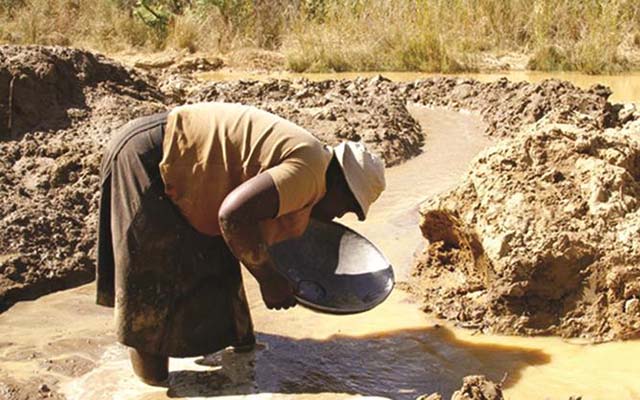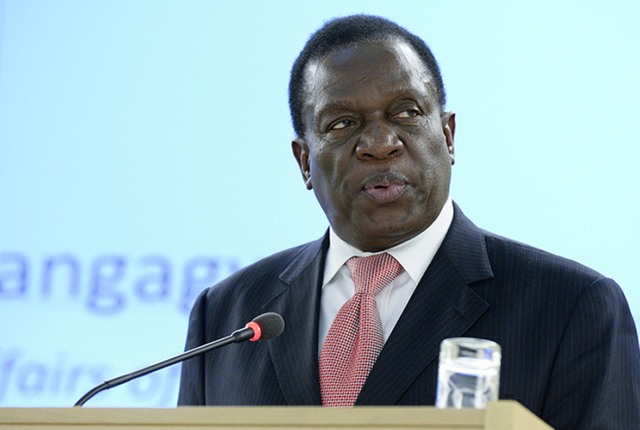Gender inequality rife in mining sector

 Locadia Mavhudzi Features Correspondent
Locadia Mavhudzi Features Correspondent
Stepping into the mining sector has over time been a male domain and the trend continues today, during the pre-colonial era women worked alongside men in alluvial gold mining. Gold mining was an important economic activity.
This is supported by the fact that the origins and the expansion of some pre-colonial states, for instance the Great Zimbabwe State, was a result of long distance trade which depended among other things on mining. It was possible for the women to take part in mining because gold and other minerals then were collected from the surface and shallow pits.
In addition to the collection of alluvial gold, women played a critical part in religious functions which were conducted to promote mining businesses. For example during mineral searching rituals, female spirit mediums led the way to ensure successful exploration, prospecting and mineral extraction.
The importance of women in mining then was graphically depicted by the shape of the smelting furnace. The furnace had breast-like features which signified procreation and fertility of women. This implied that smelting was an important process which produced valuable items for domestic use and long distance trade.
However, the advent of colonial rule spelt doom for further participation in mining by women as most areas were fenced off and became private properties. Women could no longer access the mineral rich areas.
Furthermore, deep level underground mining which replaced surface mining created difficult conditions for women to take part. Women were further alienated from the mining sector by legislations which were enacted to bar them from the mining areas.
To make matters worse the myth that to be intimate with a woman prior to going to work would cause accidents lent weight to the mine owners who resolved to exclude women from mining premises.
From colonial times to modern times, an independent Zimbabwe ushered in women empowerment laws that were embraced with celebration amongst small scale women miners in Shurugwi.
Living on the Geat Dyke with rich mineral resources all over, women in such a place can be expected to drive the economy, given the nature of hard work and perseverance that women have always been known for since time immemorial.
However, it is not all bliss as it appears from the surface. A lack of funding has remained a major challenge for small-scale mining enterprises partly because financial institutions and investor confidence in the sector is low. Mrs Nomalanga Dube, a member of the Shurugwi Small-scale Miners, revealed her ordeal.
“I had to court an Israeli investor whom I agreed to work with on my gold claim.
According to our deal he was supposed to provide mining machinery and then we would share proceeds from the mining exploration,” she said.
“Now, he has duped me and no longer wants to give me my share of our joint investment. I’m now forced to take the issue to the courts because this investor is taking advantage of me because I’m a woman.”
While financial institutions have been encouraged to extend loans to all people regardless of sex, women remain victims of mistrust.
“Access to bank loans is also a major challenge for us because when we approach banks and seek to use our claims as collateral, the banks do not give us the loans. Our assets are our mining claims so we are appealing to the government to intervene so that we get loans to revive our work,” Dube said.
Penetrating into the mining sector also requires that women get basic knowledge about minerals. We have a number of women in Shurugwi who sold their claims because they were duped into believing that they were not rich in minerals.
“We had a seven-member women’s syndicate operating near Musavezi River. The male labourers who were aware of the women’s limited knowledge of the mining sector misled them into believing that the rocks they were mining underground were not rich in gold. The labourers were stealing gold up to a point when the syndicate decided to sell their claim yet the area is rich,” Dube said.
Mrs Heather Mhuriyengwe, a member of the Shurugwi Miners’ Association, revealed that gender discrimination was also rampant in the mining sector.
“Gender discrimination and sexual harassment, sometimes on a subtle and sometimes on a more direct level, is experienced. For example the use of dirty language has almost become acceptable at our mills and shafts,” she said.
To improve women miners’ access to funding, the United Nations development programme has disbursed a US$5 million loan facility for women miners in the country, the Zimbabwe Miners’ Federation, has revealed.
“We recognise the challenges that women miners face and recently the UNDP released a $5 million loan facility aimed at women miners. Under this facility, the women can only access the money as cooperatives or syndicates in order to spread the risk of payback. So far Gwanda Women Miners have accessed the money and have boosted their machinery,” said Mr Dosman Mangisi, spokesman for the Zimbabwe Miners’ Federation.
Asked on the issue of using claims as collateral, Mr Mangisi, said Parliament was reviewing the Mines and Minerals Act to address those challenges.
“The current Act is under review and the use of mining claims as collateral by miners is under the spotlight. We are anticipating that colonial imbalances will be addressed,” he said.
Women miners in Shurugwi have welcomed the new political dispensation with optimism that small-scale miners will be capacitated to grow their business. According to Mr Wellington Takavarasha, chairman of Zimbabwe Artisanal and Small-Scale Mining Council, there are an estimated 500 000 artisanal miners in the country, 153 000 of them women and children.










Comments